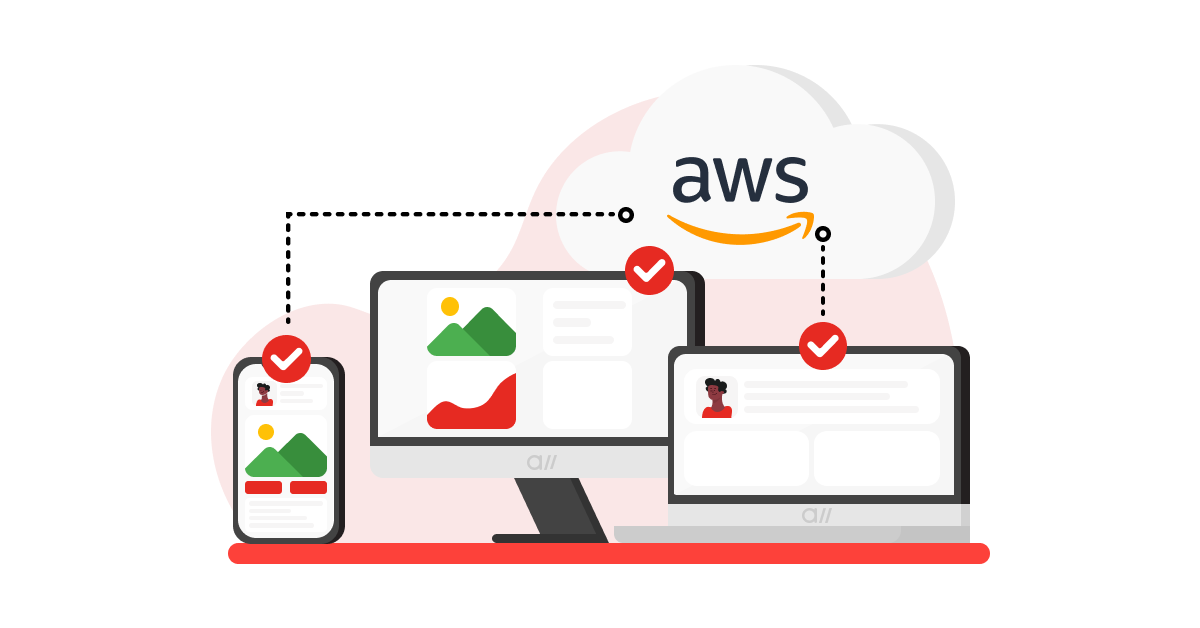Conquering the Cloud: A Deep Dive into AWS Migration Strategies
 Sarvadnya Jawle
Sarvadnya JawleTable of contents

Migrating to the cloud isn't just about flipping a switch – it's a strategic journey with distinct stages that require careful planning and execution. Let's break down the key steps, using real-life examples to demystify the process and guide you towards a smooth and successful cloud migration.
Stage 1: Preparation & Planning - Laying the Foundation
Before diving into the cloud, it's crucial to prepare your infrastructure. Imagine your company runs a monolithic application – a giant, tangled mess of code. This stage is all about modernizing this beast, transforming it into smaller, independent microservices. This allows for easier migration and future flexibility.
Next comes planning: a meticulous roadmap for your cloud journey. Here, you define the phases of migration – which services move when – and choose the optimal strategy. Buckle up, because we're about to explore the 7 Rs of cloud migration:
Rehost: Lift-and-shift. Fast, but limited flexibility.
Refactor: Restructure the application. Most transformative, but complex.
Replatform: Use cloud services for modernization. Flexible and scalable.
Relocate: Move data to a different cloud provider.
Retain: Keep some data on-premises for security or compliance reasons.
Retire: Shut down unused services for cost optimization.
Repurchase: Replace existing licenses with cloud-native services.
1. Rehost (Lift & Shift):
This is the simplest approach, like dropping your monolithic application onto AWS as-is. It's quick and cost-effective, but lacks the scalability and agility benefits of the cloud. Think of it as carrying your bulky suitcase instead of packing light for your trip.
2. Replatform:
Here, you leverage cloud-specific services like AWS Lambda or DynamoDB to modernize your application while still running on the cloud. It's like upgrading your suitcase to a backpack, gaining some flexibility while maintaining familiarity.
3. Refract/Refactor:
This is where things get exciting! You completely revamp your application architecture, transforming that monolithic beast into a nimble microservices army. It's like building a sleek, modular travel kit from scratch, maximizing efficiency and adaptability.
4. Relocate:
This involves moving your existing infrastructure to the cloud, but without major changes. Think of it as taking your same old suitcase, but checking it in for a first-class cloud flight.
5. Retain:
Not everything needs to migrate. Sensitive data, for instance, might be best kept on-premises. It's like leaving your precious family heirlooms in a secure vault at home while exploring the world with your new travel kit.
6. Retire:
Say goodbye to obsolete services! This stage involves ruthlessly pruning your IT landscape, eliminating unnecessary baggage. Imagine decluttering your closet before your trip, getting rid of clothes you haven't worn in years.
7. Repurchase:
Sometimes, cloud-native versions of existing software offer superior functionality. It's like trading your old travel guide for a cutting-edge app with real-time recommendations and offline maps.
Choosing the Right Strategy:
The ideal strategy depends on your specific needs and goals. Consider factors like cost, complexity, risk tolerance, and desired agility. For our monolithic application example, a phased migration starting with replatforming key components could be a good first step, followed by a gradual refactor to microservices in subsequent phases.
Databases: The Guardians of Your Data
Database migration deserves special attention. Choosing the right fit, like AWS RDS for relational databases, is crucial. Remember to always back up your data before embarking on this journey! Think of it as packing a spare phone charger for your trip – you never know when technology might throw a tantrum.
Stage 2: Migration - Taking Flight
This stage is where the rubber meets the road. DevOps engineers like us get busy writing automation scripts, often using tools like Terraform to seamlessly provision resources on the AWS platform. It's like having a trusty travel agent who handles all the logistics while you focus on enjoying the adventure.
Stage 3: Monitoring & Optimization - Continuous Improvement
Once you're in the cloud, it's not time to kick back. Constant monitoring is essential to ensure smooth operation and identify potential issues. Think of it as checking your travel itinerary and maps regularly to avoid missed connections or wrong turns. Based on your monitoring data, you can then optimize your cloud infrastructure for cost-efficiency and performance. It's like fine-tuning your travel plans to maximize your budget and minimize travel time.
Preparation and planning happen together, forming the solid foundation for your cloud journey. Migration can be done in phases, with each step carefully orchestrated by DevOps engineers. Finally, monitoring and optimization ensure a smooth flight and a constantly improving experience in the cloud.
Remember, this is just a roadmap – the specific steps and strategies will vary depending on your unique situation. But by understanding the key stages, principles, and options, you can confidently navigate your own cloud migration, leaving the monolithic baggage behind and embracing the agility and scalability of the cloud. So, pack your bags, choose your strategy, and get ready to conquer the cloud!
Subscribe to my newsletter
Read articles from Sarvadnya Jawle directly inside your inbox. Subscribe to the newsletter, and don't miss out.
Written by

Sarvadnya Jawle
Sarvadnya Jawle
I am DevOps enthusiastic person. I work on Docker, Kubernetes and Open source. talks about cloud native tools.